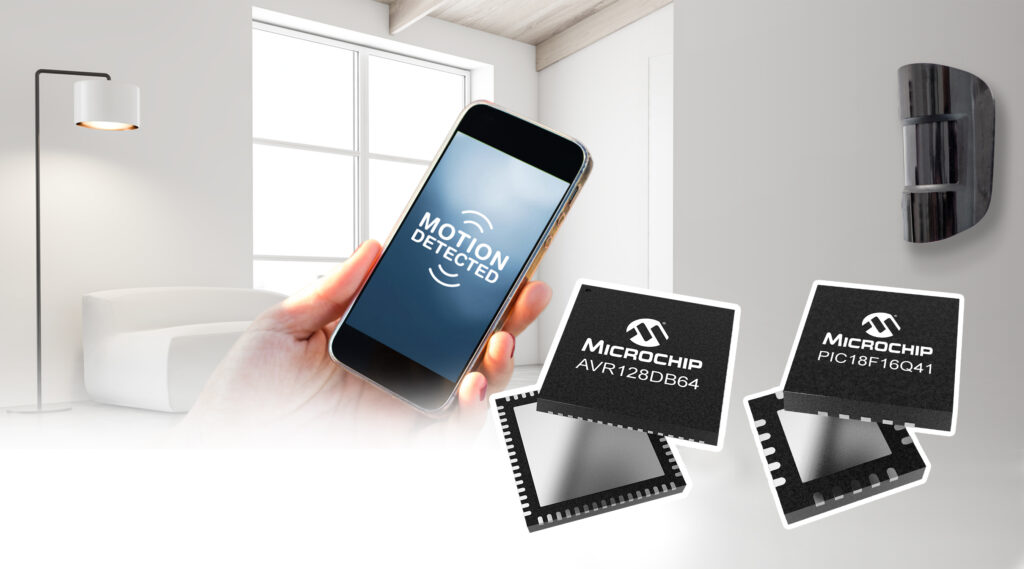Adds MCUs that integrate configurable analog and digital peripherals supported by mixed-signal development environment
New Delhi, October 22, 2020 — Sensor-based Internet of Things (IoT) applications rely on a combination of analog functionality and digital control capability to meet a challenging list of requirements including low cost, small size, performance and low power. Addressing this challenge through a focus on increased microcontroller (MCU) integration, Microchip Technology Inc. (Nasdaq: MCHP) today announced the PIC18-Q41 and AVR DB MCU families that are the first to combine advanced analog peripherals and multi-voltage operation with inter-peripheral connections for increased system integration and reduced signal acquisition times, and offer the convenience and efficiency of operating in a single design environment.
“Microchip is bringing easy-to-use analog capability to cost-effective PIC® and AVR® MCUs so designers can meet the requirements of large-scale IoT systems,” said Greg Robinson, associate vice president of marketing for Microchip’s 8-bit microcontroller business unit. “With a unified, seamless development tool experience, designers can use these MCUs as a single-chip controller, or as an intelligent analog signal conditioning component in a larger system.”
To address the need for signal conditioning in space-constrained sensing and measuring applications such as IoT end nodes and industrial, medical devices, wearables, automotive and lighting systems, the PIC18-Q41 MCU has a configurable Operational Amplifier (Op Amp) and Analog-to-Digital Converter (ADC) with computation and Digital-to-Analog Converters (DACs). It is particularly well-suited for IoT and large-scale artificial intelligence (AI) at-the-edge, including predictive maintenance edge nodes in a smart factory. Offered in compact 14- and 20-pin packages, the PIC18-Q41 MCU also makes a good companion to Microchip’s 32-bit MCUs and other controllers that require analog integration.
Mixed-signal IoT systems often include multiple power domains, and the AVR DB MCU simplifies the challenges of these designs while reducing cost by integrating true bi-directional level shifters. This feature lowers cost in a wide range of applications including automotive, appliances, HVAC and liquid measurement. The addition of three independent and highly configurable Op Amps, a 12-bit differential ADC, 10-bit DAC, three zero cross detectors and Core Independent Peripherals (CIPs) makes the AVR DB MCU ideal for virtually any application involving analog signal conditioning and processing functions.
Development Support
The PIC18-Q41 and AVR DB MCU product families are supported by Microchip’s MPLAB® X Integrated Development Environment (IDE), its MPLAB Code Configurator (MCC) and the MPLAB Mindi™ Analog Simulator. MCC is a free software plug-in that provides a graphical interface to configure peripherals and functions specific to an application. In addition to MCC, the AVR DB is supported by Atmel START, Atmel Studio and third-party tools such as IAR and the GCC C compiler. MCC and START help analog and digital designers easily configure an Op Amp system for various typical use cases through a graphical user interface with no coding required.
Both MCU families offer a compact, cost-effective development board with programming and debugging capabilities: the PIC18F16Q41 Curiosity Nano Evaluation Kit (EV26Q64A) and the AVR DB Curiosity Nano Evaluation Kit (EV35L43A). Quick start guides for the PIC MCU and the AVR MCU are available to start projects immediately.
Pricing and Availability
The PIC18-Q41 and AVR DB MCUs are offered in a range of memory sizes, packages and price points. The PIC18-Q41 pricing starts at $0.65 in 10,000-unit quantities. The AVR DB pricing starts at $0.95 in 10,000-unit quantities.
For additional information, contact a Microchip sales representative, authorized worldwide distributor, or visit Microchip’s website. To purchase products mentioned here visit our purchasing portal or contact a Microchip authorized distributor.







